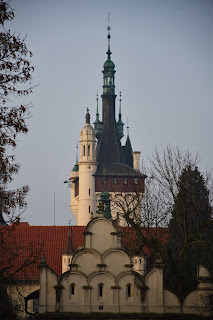Do not Listen to the Weather Forecast and Trust Your Bones
I recently
found out that Yunnan is the location of Shangri-La, which, as every good tourist
brought up on Tintin and Scooby Doo will realise, I am now obligated to visit.
Never mind the fact that the city, formerly known as Zhongdian, was renamed to
Shangri-La in 2001 to attract tourists. The pictures look nice and I get to say
I’ve been to the mythical lost paradise to wow other sock-and-sandal-wearing
westerners.
In the meantime, my weekly translation exercises have been keeping me well entertained. After despairing of not being able to find a German poet whose work has not yet been translated into English, I came across Emerenz Meier, an early twentieth century Bavarian poetess, whose poem “Mushrooms” is a pure delight. I discovered treasure of similar brilliance in the writings of the Cuban poet Agustín Acosta, and as for Yiddish, I have stayed at the doorstep of Melech Ravitch, some of whose work I translated for my Yiddish class at Yale.
What this
new bullet point on my itinerary means, however, is that the time I have to
explore Kunming is somewhat more limited than I initially anticipated. For that
reason, I planned out an all-encompassing tour of the city to undertake right
after my Friday exam, eliminating the vast majority of the points on my
itinerary. The intense planning caused me some mild exhilaration, but a look at
the grim weather forecast smacked me right back to the ground: a high chance of
rain throughout the afternoon, and cloudy all day.
Yet for
some reason, it just did not feel like the next day was going to be cloudy and
rainy, and I fell asleep with a high dose of logically unjustified scepticism.
It was not misplaced, however, as I woke up the next day to a bright and sunny
morning, which extended to an entire bright and sunny day. After I finished my
exam, I strolled through Kunming Zoo to Yuantong Temple, went down to the
Huaniao (Flowers and Birds) Market, stopped by the Eastern and Western towers, and even had time to
consume an enormous plate of lotus root. The highlight of my day was when I
helped out some very confused Australian tourists who could not understand that
– due to their age – they could enter the temple without buying tickets.
Admittedly, this does violate the language pledge, but I don’t think CET’s
administration is reading my blog.
A peacock at Kunming Zoo (not featured: the hordes of tourists surrounding him)
An albino peacock at Kunming Zoo
A monument inside Kunming Zoo
A deer trying to figure out whether I am carrying food
The view of Yuantong Temple from Kunming Zoo's hill
Yuantong Temple
Another view of Yuantong Temple
A more symmetrical view of Yuantong Temple
My favourite view of Yuantong Temple
A courtyard at Yuantong Temple
Meticulously decorated handrails at Yuantong Temple
The gate to Yuantong Temple
The Monument to the People's Heroes in the centre of Kunming
A road in the Huaniao Market
A church to the south of the Huaniao Market
Downtown Kunming
Nancheng Mosque
Yongning Mosque
The gates at Jinma Square
The Western Tower
The Western Tower from behind
The statue of a merchant and his horses in front of the Eastern Tower
Ancient fortress between the Eastern and Western Towers
A vertical view of the Eastern Tower
A horizontal view of the Eastern Tower
The eastern gate at Jinma Square
The street under Nancheng Mosque
A tower in Cuihu Park
A whiff of home on the streets of Kunming
A little iron ox reflecting the priorities of China's early agricultural societies
A cowrie container
Supposedly a belt ornament (I am not sure how on earth one attaches this to a belt)
A deer
A spearhead - judging by the details, purely decorative
An intricately crafted Buddhist statue
Jingang pagoda in the Vajra style, Guandu
A tower in Guandu
Door detail at a Taoist temple in Guandu
In the meantime, my weekly translation exercises have been keeping me well entertained. After despairing of not being able to find a German poet whose work has not yet been translated into English, I came across Emerenz Meier, an early twentieth century Bavarian poetess, whose poem “Mushrooms” is a pure delight. I discovered treasure of similar brilliance in the writings of the Cuban poet Agustín Acosta, and as for Yiddish, I have stayed at the doorstep of Melech Ravitch, some of whose work I translated for my Yiddish class at Yale.











































Oh no, you broke your language pledge! Don't worry, the Light Fellowship will not report this to CET. :) It sounds like you're doing great Ladi! We look forward to next week's tale!
ReplyDelete